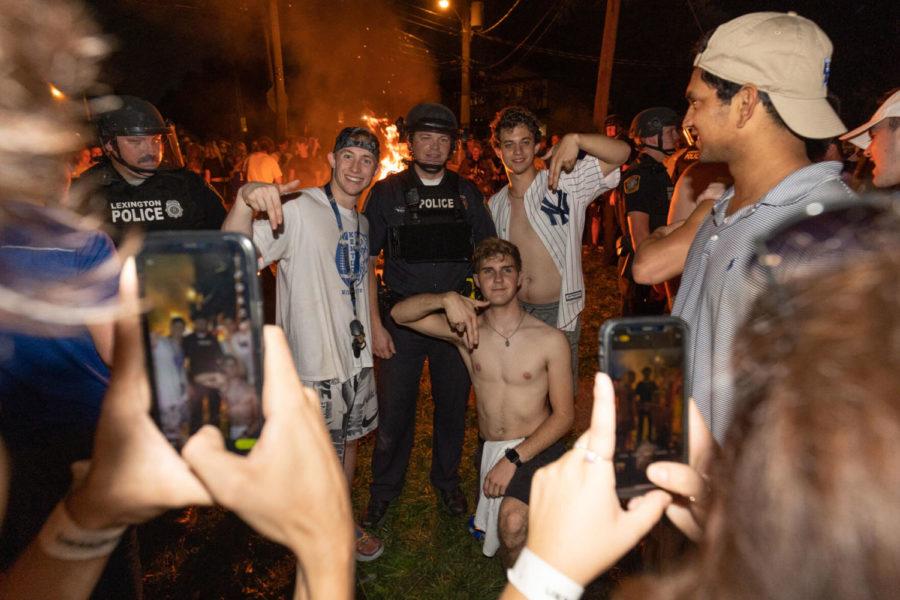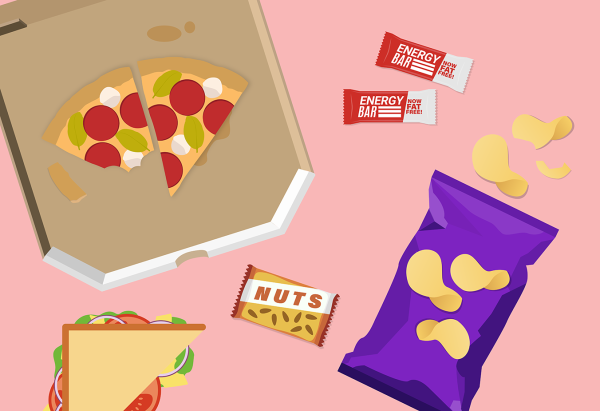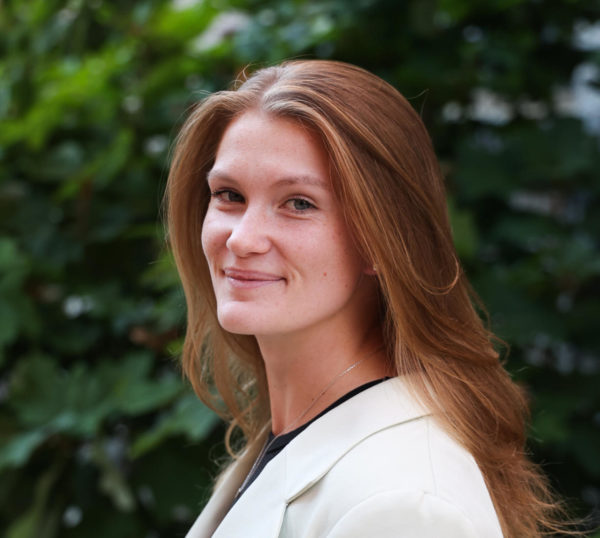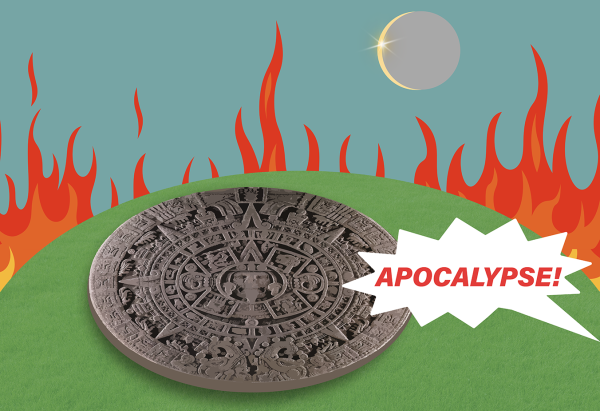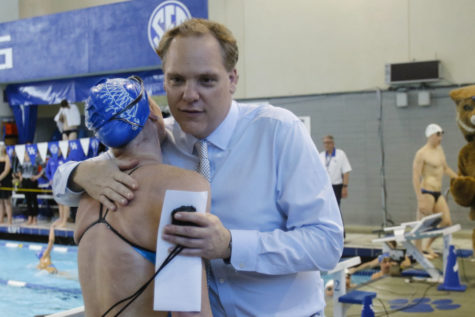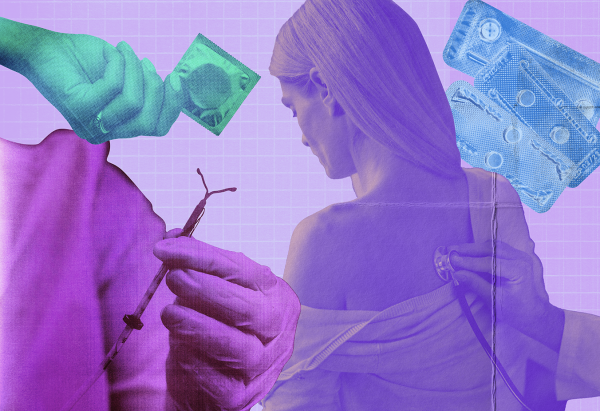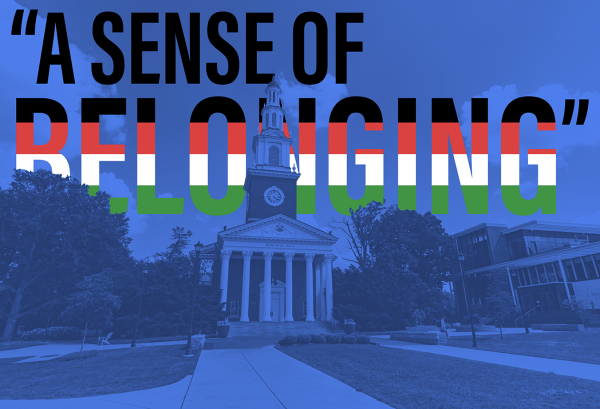State Street: Should the tradition continue?
A group of UK students poses for a photo with a Lexington police officer during a student celebration after Kentucky football defeated No. 10 Florida on Saturday, Oct. 2, 2021, on Crescent Avenue in Lexington, Kentucky. Photo by Jack Weaver | Staff
October 13, 2021
University of Kentucky fans are notorious for burning couches on State Street. On Oct. 2, Kentucky football upset Florida in a 20-13 victory to remain undefeated. The destructive tradition of State Street lived on that night.
This tradition can be traced back to 1978, when the UK basketball team won the NCAA national championship and fans flooded the airport to welcome them home. In a previous article from the Kentucky Kernel, the Bluegrass Airport manager said that the majority of the fans were just happy and celebrating the win; however, some fans became destructive. They ripped telephones off of the wall, broke into display cases, and footprints were found eight feet up on the walls of the terminal.
Again, in 1998, the UK basketball team won the NCAA basketball championship and fans stormed the junction of Woodland and Euclid Avenues.
In 2018, UK fans flipped a car during the celebration on State Street after UK football beat Florida. Based on the reaction from UK officials, one might think that was the first time that it happened. There was an investigation into who flipped the car, and a GoFundMe was started to replace the vehicle. However, during March Madness in 2012, five cars were reportedly flipped and vandalized during a celebration on State Street. This also happened in 1996 after the UK basketball team beat Syracuse.
Something notable in the past few years is the abundance of SWAT officers present during the burning of couches and flipping of cars. Scrolling through social media the day after, one will often see plenty of pictures of SWAT officers alongside the students.
I like to think back to the Black Lives Matter movement, which, granted, had a completely different meaning and purpose but still saw police officers deployed to control crowds. Is it okay for SWAT officers to throw tear gas at people fighting peacefully for their civil rights as human beings? This question is especially pressing considering that SWAT officers partook in photoshoots with students as they flipped cars and burned couches.
Now let’s consider the Black Lives Matter movements that led to people vandalizing property. How is it okay for these people to have tear gas thrown at them or be arrested while students share a good laugh with SWAT officers on State Street committing their own vandalization for fun?
Like I said, these two events have different purposes. One is in good fun, and the other is a movement to fight for civil rights in the community. If you take the meaning behind each movement out of the equation, there is no difference between the two, besides only one of the groups being able to party with the police.
The State Street tradition is an exciting experience for students, and when no one is getting hurt, I don’t think we should stop it. But if no one is getting hurt in a march for civil rights, we shouldn’t stop that either. I think it’s important to think about why the SWAT team is taking a more mellow response to student vandalism and arresting or throwing tear gas at peaceful protestors.
Is there a double standard for what type of vandalism is allowed in the eyes of the SWAT team? When students are able to spray beer at officers when the officers are attempting to get some space, it’s hard not to question the standards of the police officers. I don’t recall officers taking photos with protestors while they fought for their civil rights.









































































































































